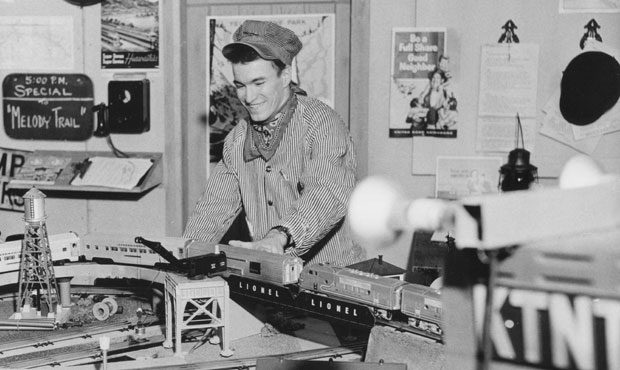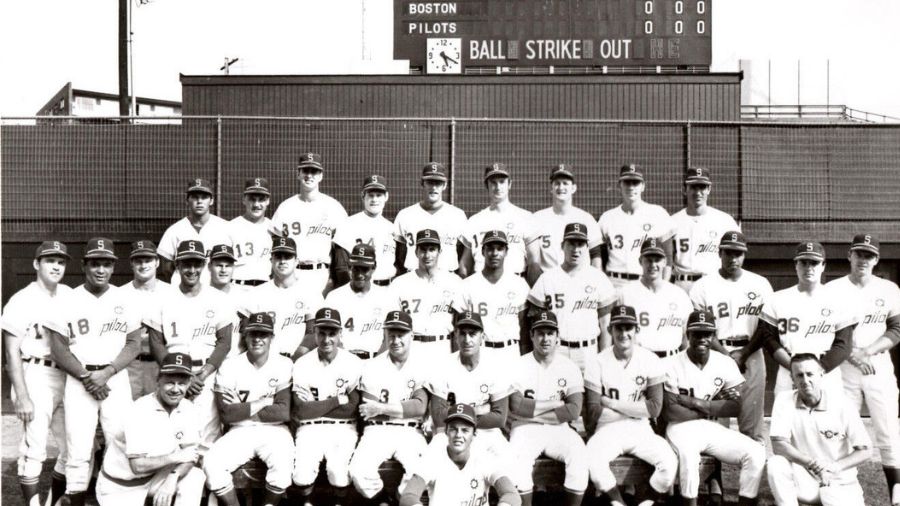Vintage ‘Seattle’s Black Victorians’ is a must-read
Aug 12, 2020, 12:13 PM

The 1980 book “Seattle’s Black Victorians” by Esther Hall Mumford deserves a place on the Northwest history bookshelf. (Public domain)
(Public domain)
Seattle’s Black Victorians is the name of a book published in 1980 that reveals the mostly forgotten stories of Black Seattleites in the late 19th century. Attention for this part of the city’s history – and appreciation for the book and its author – are long overdue.
There’s a handful of relatively well-known books about early Seattle history. Probably the best known is Skid Road by Murray Morgan, which was written in the early 1950s, and is still in print from UW Press — and which a lot of people with only passing interest in Seattle history have read. There are older books by Clarence Bagley, Edmond Meany, and Frederic Grant – that cover the same era – that historians and other researchers still at least partially rely on when examining those early years.
Not nearly as well-known as it should be is Seattle’s Black Victorians: 1852 to 1901.
The paperback volume, illustrated with numerous vintage black and white photos, was written in the late 1970s and released in 1980 by Esther Hall Mumford through her own Ananse Press.
“I self-published it,” Mumford said by phone earlier this month. “My husband did the photography, the darkroom work. My dad paid for the photography materials, and we just paid for it ourselves to have it printed.”
The Mumfords printed 5,000 copies of the book.
“We were very ambitious,” Mumford said, laughing at the memory.
“We still have a few copies that are falling apart because the glue has become very dried over 40 years, and it wasn’t stitch-bound, it wasn’t a hard back,” she said. “I guess we have maybe a box or two of those [still left].”
This reporter can confirm that pages fall out of his copy of the book pretty much every time he opens the cover.
Esther Mumford moved from Louisiana to Seattle as a young woman in 1961 to attend the University of Washington. While a student, she lived with her aunt in the Central Area at the height of that neighborhood’s era as Seattle’s largest Black neighborhood.
In 1975, Mumford was hired to work on an oral history project for the state archives. Conducting those interviews with Black Seattleites led indirectly to helping produce a history exhibit. The project also led to becoming one of the founders of the Black Heritage Society of Washington, a nonprofit organization that collects Black history and presents programs and exhibits, and for which Mumford still volunteers.
For the original oral history project, Mumford talked to a lot of Black Seattleites who’d been born here in the 19th century or whose parents or other relatives had lived here then.
“In the process of interviewing that population, I discovered for myself that African Americans had been here a very long time,” Mumford said. “I had thought I was really well acquainted with the history of early Seattle, but of course [African Americans] are absent in most everything that was written [about early Seattle] prior to 1980.”
And that’s what inspired Mumford to write Seattle’s Black Victorians.
“I was surprised, I was thrilled,” Mumford said. “I was eager to share the information with other people.”
Through interviews and extensive archival research, Mumford’s book profiles several local individuals, families, businesses and events that took place in Seattle during the Victorian Era, or second half of the 19th century. Included is the earliest known Black settler, Manuel Lopes, who owned a barbershop in the 1860s, and restaurateur, hotelier, and real estate developer William Grose.
One heartbreaking takeaway from the book is the sense that for the first few decades of the city’s existence, Black people in Seattle – who numbered perhaps only several hundred by the end of the 19th century – could pretty much do what they wanted without facing the segregation and discrimination that would become more commonplace in Seattle by the turn of the 20th century.
Mumford says that this meant Black people could operate businesses like barber shops and restaurants right in the middle of town and serve all customers, regardless of race. Black people could also live wherever they wanted; redlining and other restrictions were still decades in the future.
As anyone familiar with Seattle history in the 19th century knows, the city was no utopia of racial harmony. While there were stretches of relative calm, Native Americans were ultimately driven from the city to reservations by unfair treaties, and Chinese workers were persecuted and forced out, too, in a series of violent actions.
One reason for the relatively fair treatment of Black people in those first few decades was because their numbers were so small – it was as if there was no perceived economic or social threat.
Mumford says this began to change as the city grew rapidly during the 1880s.
“The 1860s, 1870s, early 1880s, there were fewer constraints based in discrimination,” on Black people in Seattle, Mumford said. “Although, over the years, there’s this ever-increasing restriction of basic rights and freedoms, and discrimination is becoming more prevalent.”
However, there was at least one bright spot when in 1890, just after Washington had become a state, the state legislature enacted the Public Accommodations Law. The law imposed a misdemeanor charge and fines on anyone who denied access to hotels, restaurants, transportation or places of amusement on the basis of “race, color or nationality.”
For this progressive law, Seattle’s Black Victorians credits Owen Bush, who was Black and who was elected to the legislature from Thurston County in the 1880s and 1890s, as well as early settler John Conna, who was appointed Sergeant at Arms in Territorial Senate, and then State Senate.
Unfortunately, the progressive element of the 1890 legislation was short-lived; state lawmakers amended it in 1895 and the penalties were removed, rendering it essentially toothless.
Still, civil suits were occasionally pursued and occasionally won in discrimination cases. A Black attorney in Seattle named J. Edward Hawkins argued in 1898 that a Black client had been discriminated against by a Seattle restaurant.
“The court agreed, but they only awarded one dollar,” to the plaintiff, Mumford said. “And so someone said to Hawkins, ‘Why do you keep taking these cases when you only get these piddly little sums?’ And he said ‘It’s principle, it’s not the damages we’re after.’”
There are some lighter anecdotes in the book, too.
Mumford says some of the people she interviewed 45 years ago were in their late 80s when she sat down to hear their stories. One of those interviewees was Theresa Brown Dixon, whose uncle had worked in the city’s first barbershop.
It turns out at least one of Dixon’s ancestors didn’t think Seattle really had much of a future.
“Her father was running an oyster house down in Astoria, and he came over to visit his brother with the possible idea that he might move up to Seattle,” Mumford said. “She said he came and he spent just a short time around and he went back to Astoria and he told his wife and kids, ‘It’ll never amount to anything over there.’”
“You know, this is the 1860s, and it’s all stumps and mud,” Mumford said, laughing deeply.
“I think he was not impressed,” she added.
Seattle’s Black Victorians is packed with priceless stories about William Grose, Manuel Lopes, Theresa Brown Dixon, J. Edward Hawkins, and others who don’t figure in Skid Road or other better-known books about Seattle history, but who nonetheless helped build the city we inhabit today.
It’s clear, pages falling out or not, without Esther Mumford’s work to create Seattle’s Black Victorians 40 years ago, there would be a void in the record, and much of this early history – Seattle history, Black history, Black Seattle history – would just be lost.
Seattle’s Black Victorians deserves to be in circulation again in a new printing and durable binding, so that it can have a well-deserved spot on the bookshelf of anyone who cares about Pacific Northwest history.
Perhaps there’s a publisher of Northwest history – I’m looking at you, University of Washington Press, Washington State University Press – willing to help revive Seattle’s Black Victorians for another generation of readers.
You can hear Feliks every Wednesday and Friday morning on Seattle’s Morning News and read more from him here. If you have a story idea, please email Feliks here.













